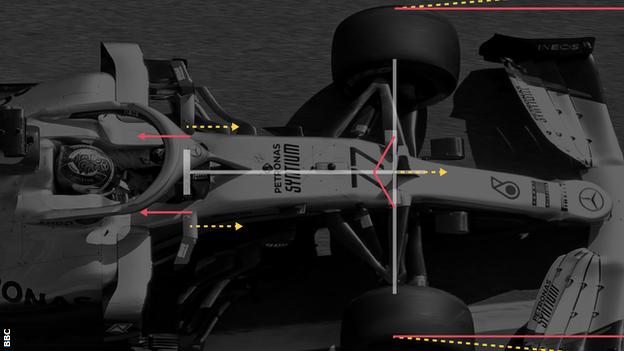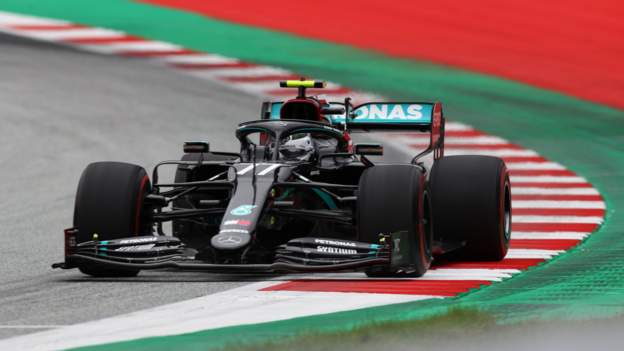Formula 1 officials have rejected a protest by Red Bull against a controversial steering system on Mercedes’ 2020 car.
Red Bull alleged that the so-called dual-axis steering system (DAS) broke the rules on two counts.
They said that was because it was an aerodynamic and suspension-related device.
But stewards at the season-opening race decided that it was legal because it constituted a steering device alone.
They said it was “not conventional” but did not contravene the rules on steering.
Red Bull argued that the DAS was a moveable aerodynamic device and that it was an adjustment to the suspension while the car was in motion.
The system alters the ‘toe’ of the front wheels by moving the steering wheel.
The ‘toe’ is the angle of the front wheels in relation to the longitudinal axis of the car.
F1 cars operate with a degree of ‘toe-out’ – which effectively means that the front part of the tyres are turned outwards by a few millimetres.
This is beneficial when the driver turns in to the corner as it gives them more grip and stability but causes a degree of ‘scrub’ on the straights, where the tyre is dragged across the track at an angle, which causes its temperature to rise.
In the Mercedes system, the driver can pull on the steering wheel to straighten the front wheels as he comes on to a straight and then push back on it to revert to the ‘toe-out’ position as he enters a corner.
The potential advantage is two-fold: it changes the amount of tyre ‘scrub’ on the straights and so improves tyre usage; and it reduces drag to increase straight-line speed.

Rivals believe its primary aim is to keep the front tyres warm while drivers keep the rears cool as they prepare for a flying lap.
The system has been banned by a change of rules for 2021, but governing body the FIA had already said it considers DAS to be legal under the current rules.
Following Red Bull’s protest, stewards at the season-opening Austrian Grand Prix declared that the system “would be illegal if it was not part of the steering system”.
But it was a steering device because it “realigns the two front wheels via the same central mechanism that conventional steering does” and it “remains under the full control of the driver”.
The ruling means Mercedes, who were first and second fastest in both of Friday’s practice sessions at the Red Bull Ring, are able to continue using the system this weekend.
Red Bull have a right to appeal.

